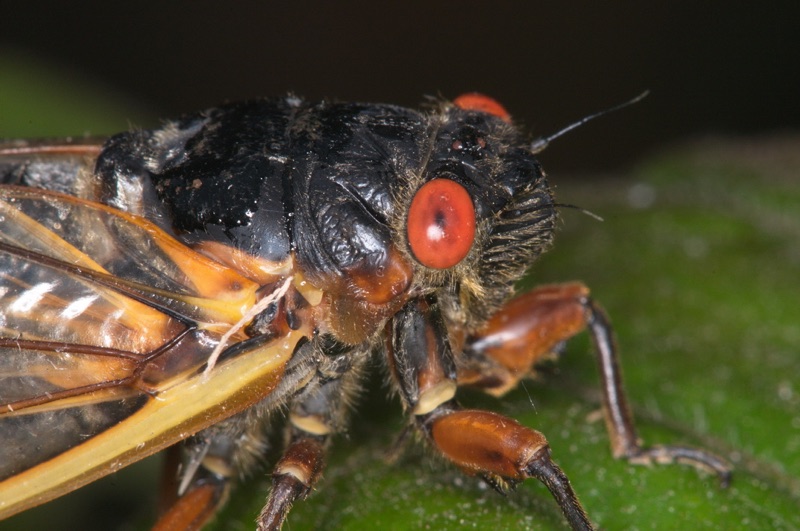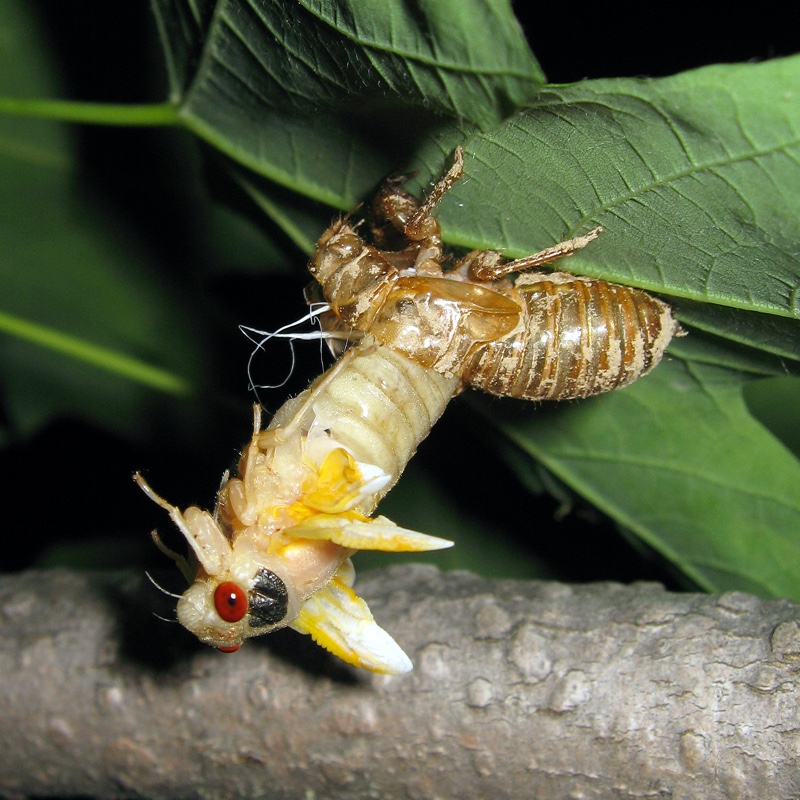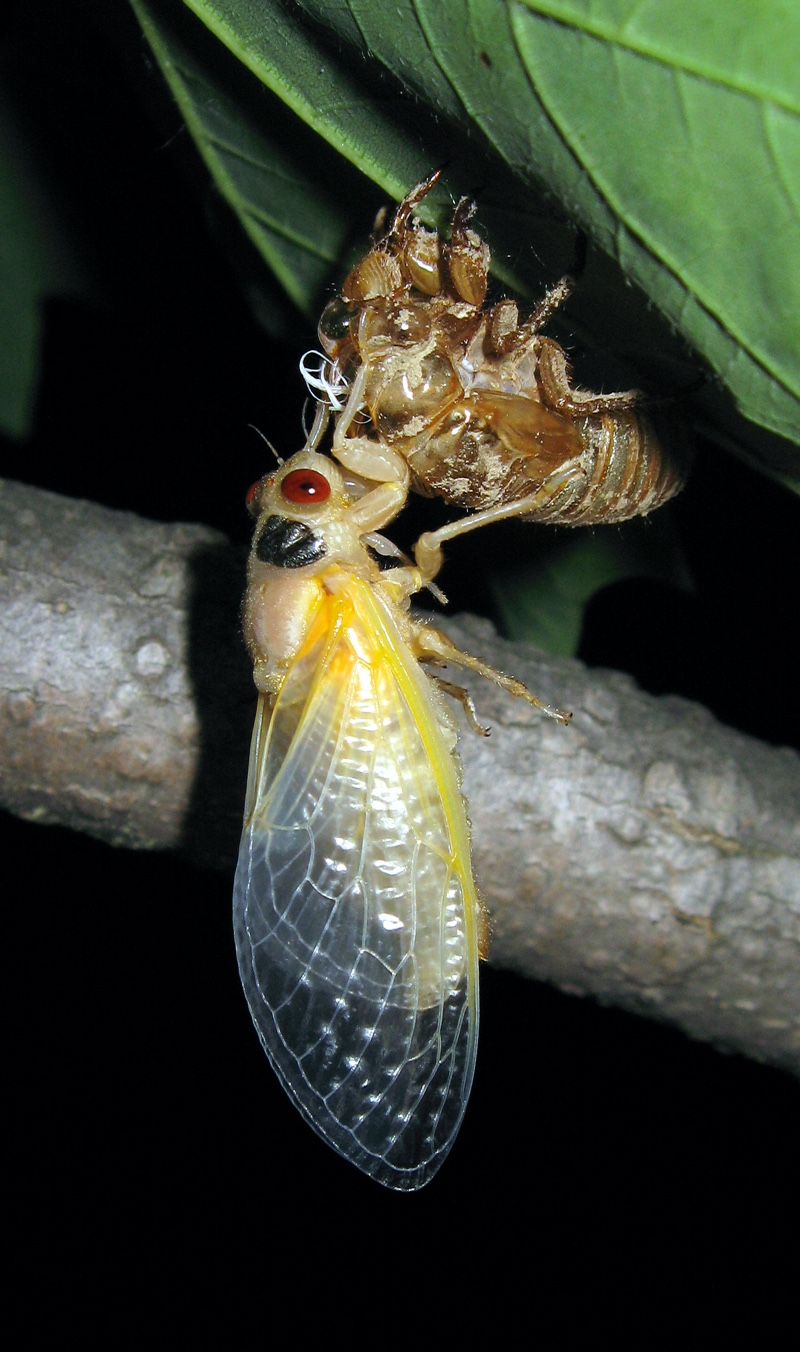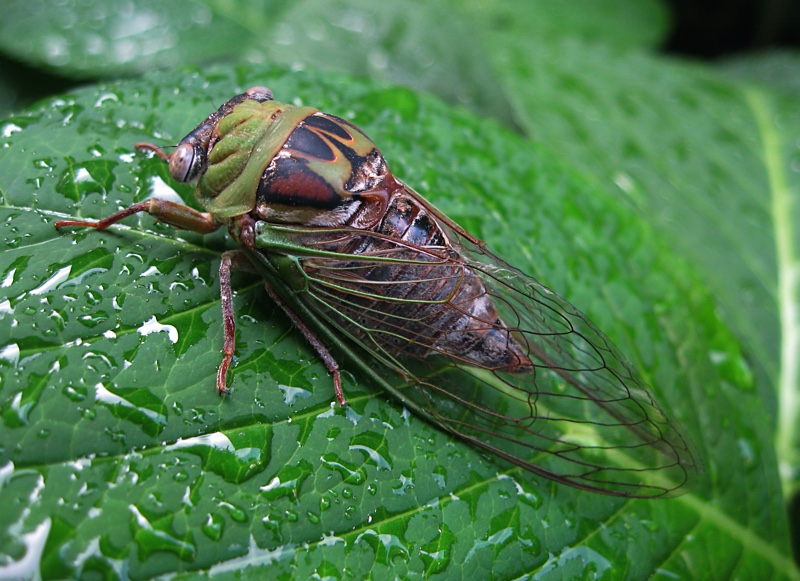Brood XIX 13 year cicadas will be emerging this year in the USA, and folks are already making plans for the emergence.
Lenny Lampel, Natural Resources Coordinator for the Mecklenburg County Park and Recreation Conservation Science Office in Charlotte, North Carolina, is organizing a “Cicada Watch” / Brood XIX Magicicada Monitoring Project. Read an article about Cicada Watch in the Charlotte Observer: Cicadas return – and you can make it count.
If you live in the Mechlenburg County area, and are interested in participating in Cicada Watch, here is more information:
Cicada Watch
Mecklenburg County Brood XIX Magicicada Monitoring Project
Brood XIX, a 13-year brood (or year-class) of periodical cicadas, is set to emerge in 2011. Known as the “Great Southern Brood”, this emergence of cicadas is expected to appear in portions of 15 states. In North Carolina, the cicadas should emerge across much of the piedmont region, including the greater Charlotte
area.
Periodical cicadas appear to be declining in parts of their range throughout the eastern United States, and some broods are now thought to be extinct. Impacts such as development, habitat changes and climatological factors may be contributing to these declines.
Mecklenburg County Park and Recreation’s Division of Nature Preserves and Natural Resources will be collecting data on the emergence of Brood XIX in Mecklenburg County in the Spring of 2011. The help of volunteers and local residents is needed to obtain baseline data on emergence locations and areas of activity within the county. Some of these areas will be monitored throughout the emergence period and can be re-visited in future emergence years to determine whether or not local populations are stable. Data collected during this Cicada Watch will help us to understand the status and future of Brood XIX in Mecklenburg
County.
Volunteers Needed!
Cicada Watch volunteers can assist in any of the following activities:
1. Observe their property and neighborhood for periodical cicada activity and report findings to staff
2. Survey areas of the county where emergences may be expected
3. Collect routine monitoring data from active locations throughout the emergence period
4. Follow up on leads of periodical cicada activity, such as reports of exit holes, emerging nymphs, shed skins, or active adults
For more information or to sign up as a volunteer, please contact :
Lenny Lampel, Natural Resources Coordinator
Phone #: 704-432-1390 E-mail: lenny.lampel@mecklenburgcountync.gov













































